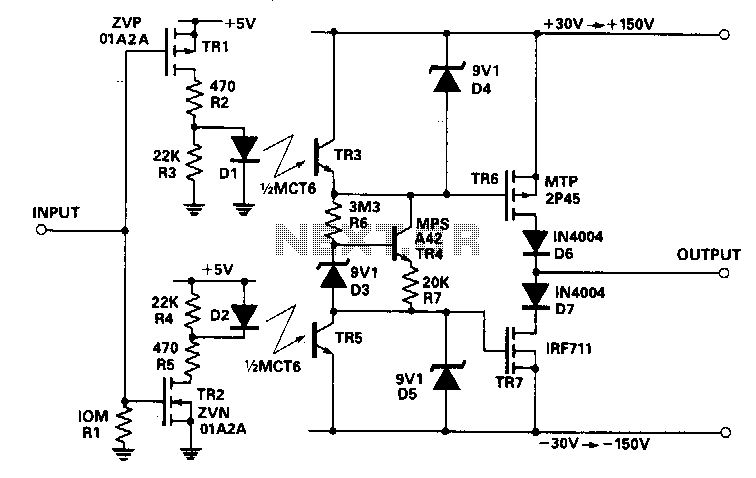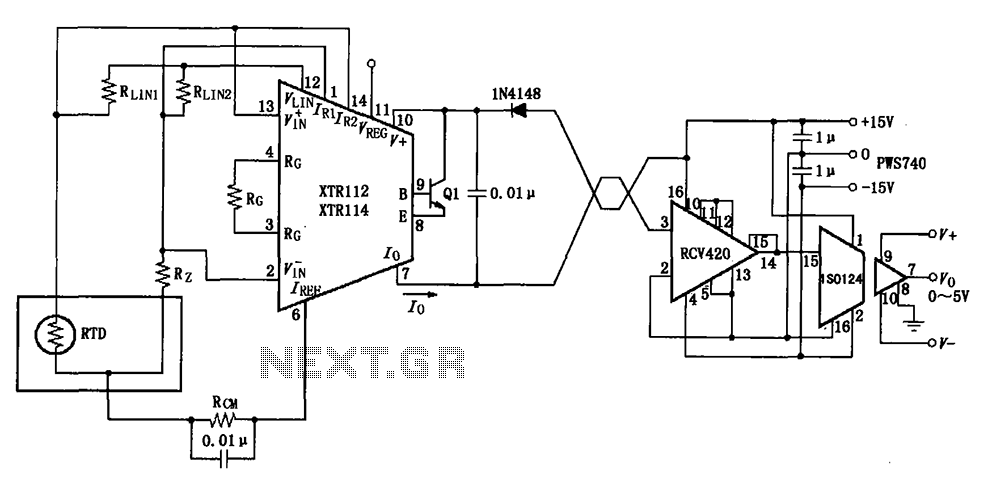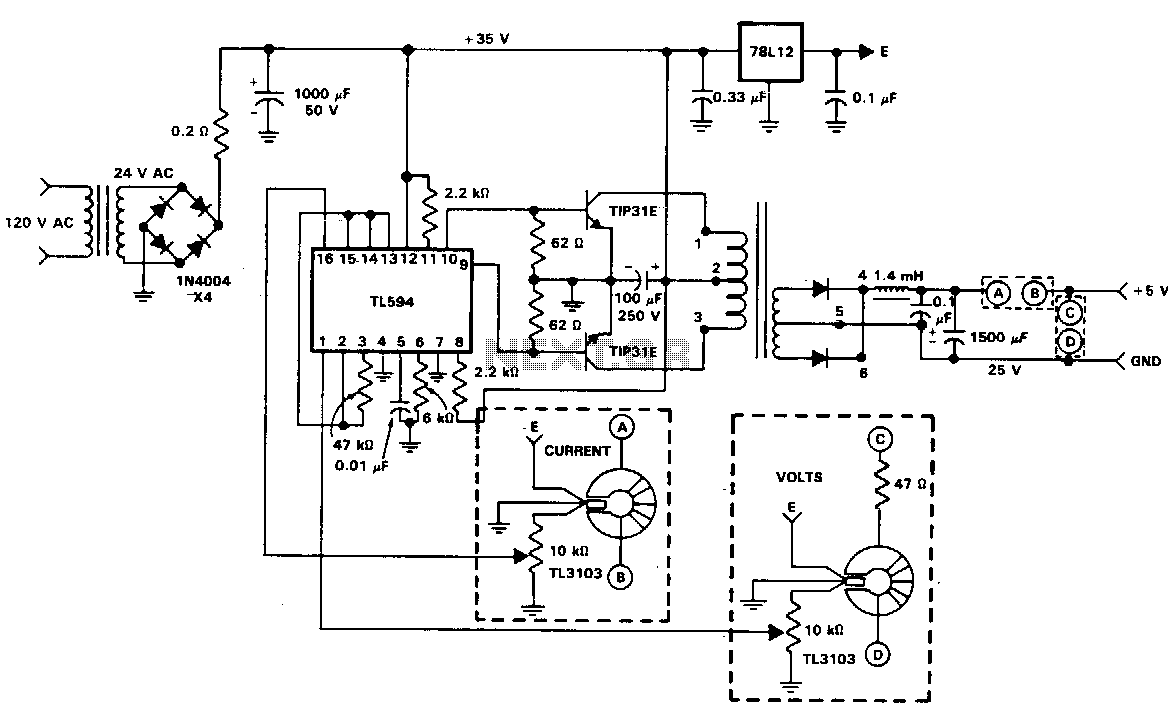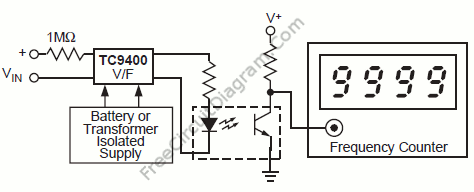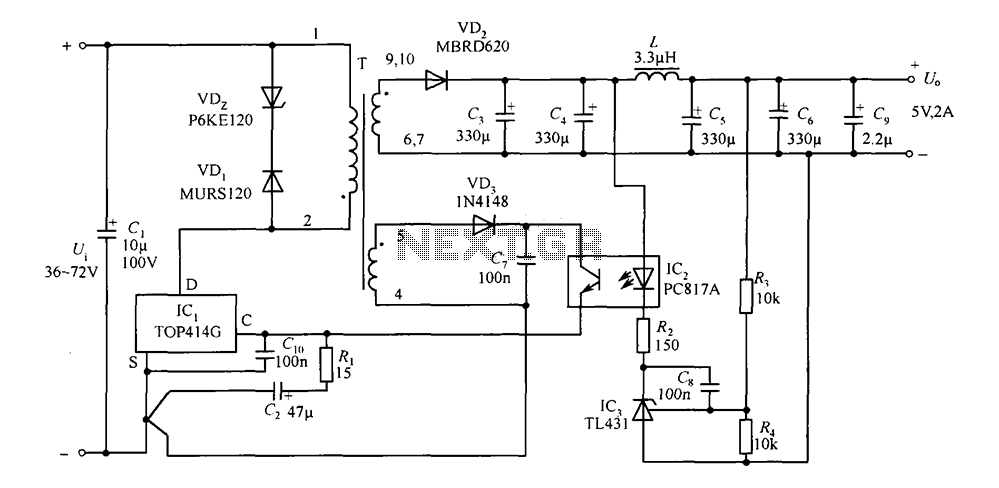
Isolated RS-485 and RS-422
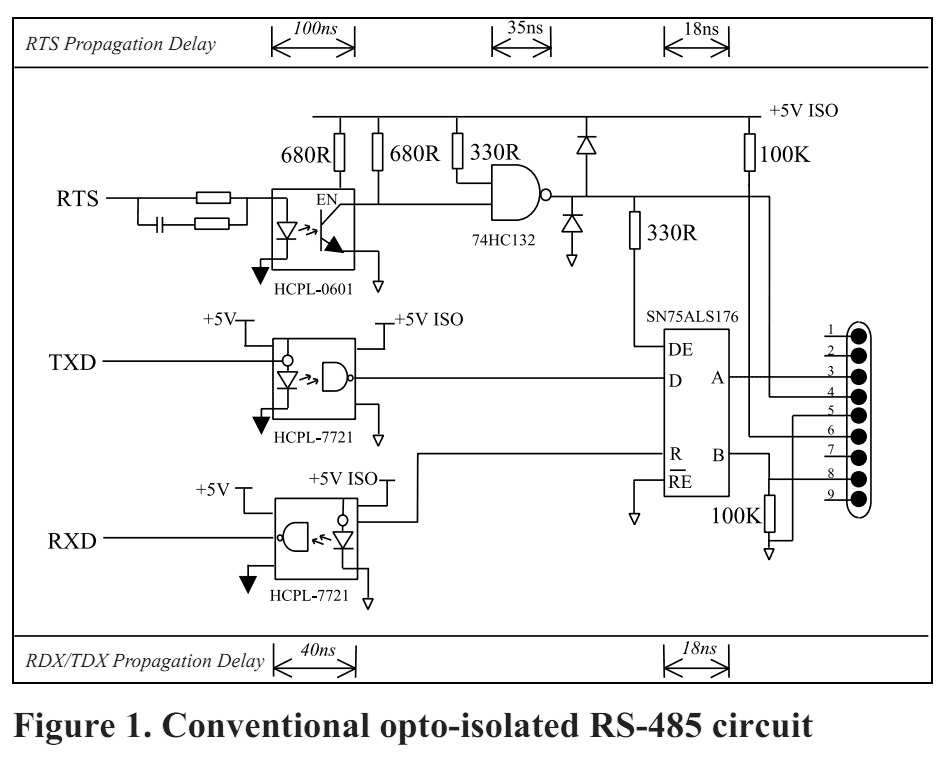
Many RS-485 and RS-422 networks require isolation for safety, noise reduction, or ground loop elimination. A conventional circuit is shown in Figure 1. Unfortunately, optocoupler isolation is slow, complicated, and unreliable. Although RTS does not require the same speed as TXD and RXD, the optocouplers require a Schmitt trigger before the transceiver to condition the signal edges. Optocouplers also have to be driven harder to improve the slew rate of the output transistor to provide faster edges. These design considerations lead to a high component count and thus less reliability. More: NVE offers a full line of IsoLoop® RS-485 and RS-422 Isolated Transceivers, including the workhorse IL485, IL422, and IL485W; the very high speed IL3585 and IL3522; the PROFIBUS compliant IL3685; the IL3200-Series fractional-load versions; the low-cost IL3100-Series; and the ultra-miniature 3-Series. IsoLoop integrated transceivers are far better than optocoupler circuits for propagation delay, skew, reliability, and component life. Figure 2 shows the component count of the traditional circuit of Figure 1. Figure 3 shows the component count for the equivalent function but better-performing IsoLoop solution. IsoLoop Isolated Transceivers are simple to use, better by design, and superior by technology.
The RS-485 and RS-422 communication standards are widely employed in industrial and commercial applications due to their robustness in noisy environments. Isolation in these networks is critical for ensuring safety, reducing noise, and eliminating ground loops, which can adversely affect signal integrity. Traditional methods utilizing optocouplers for isolation present several challenges, including slower response times and the complexity of additional components required for signal conditioning, such as Schmitt triggers. These factors can increase the likelihood of failure and complicate circuit design, leading to higher costs and maintenance efforts.
The IsoLoop® series of isolated transceivers from NVE provides an advanced solution to these challenges. These transceivers are designed to offer superior performance in terms of propagation delay, skew, and overall reliability compared to conventional optocoupler-based designs. The IL485, IL422, and IL485W models serve as versatile options for standard applications, while the IL3585 and IL3522 cater to high-speed requirements. The PROFIBUS compliant IL3685 ensures compatibility with industrial automation standards, and the IL3100-Series offers cost-effective solutions without compromising performance. Furthermore, the ultra-miniature 3-Series is ideal for space-constrained applications.
The advantages of using IsoLoop transceivers include reduced component counts, simplified design processes, and improved longevity of the devices, which collectively lead to enhanced reliability and lower total cost of ownership. The transition from traditional optocoupler circuits to IsoLoop technology can significantly streamline the design of RS-485 and RS-422 networks, making them more efficient and easier to implement. The graphical representations in Figures 2 and 3 illustrate the stark contrast in component counts between the conventional and IsoLoop solutions, highlighting the efficiency and performance benefits of adopting the latter.Many RS-485 and RS-422 networks require isolation for safety, noise reduction, or ground loop elimination. A conventional circuit is shown in Figure 1. Unfortunately, optocoupler isolation is slow, complicated, and unreliable. Although RTS does not require the same speed as TXD and RXD, the optocouplers require a Schmitt trigger before the transceiver to condition the signal edges.
Optocouplers also have to be driven harder to improve the slew rate of the output transistor to provide faster edges. These design considerations lead to a high component count and thus less reliability. NVE offers a full line of IsoLoop® RS-485 and RS-422 Isolated Transceivers, including the workhorse IL485, IL422, and IL485W; the very high speed IL3585 and IL3522; the PROFIBUS compliant IL3685; the IL3200-Series fractional-load versions; the low-cost IL3100-Series; and the ultra-miniature 3-Series. IsoLoop integrated transceivers are far better than optocoupler circuits for propagation delay, skew, reliability, and component life.
Figure 2 shows the component count of the traditional circuit of Figure 1. Figure 3 shows the component count for the equivalent function but better-performing IsoLoop solution. IsoLoop Isolated Transceivers are simple to use, better by design, and superior by technology. 🔗 External reference
The RS-485 and RS-422 communication standards are widely employed in industrial and commercial applications due to their robustness in noisy environments. Isolation in these networks is critical for ensuring safety, reducing noise, and eliminating ground loops, which can adversely affect signal integrity. Traditional methods utilizing optocouplers for isolation present several challenges, including slower response times and the complexity of additional components required for signal conditioning, such as Schmitt triggers. These factors can increase the likelihood of failure and complicate circuit design, leading to higher costs and maintenance efforts.
The IsoLoop® series of isolated transceivers from NVE provides an advanced solution to these challenges. These transceivers are designed to offer superior performance in terms of propagation delay, skew, and overall reliability compared to conventional optocoupler-based designs. The IL485, IL422, and IL485W models serve as versatile options for standard applications, while the IL3585 and IL3522 cater to high-speed requirements. The PROFIBUS compliant IL3685 ensures compatibility with industrial automation standards, and the IL3100-Series offers cost-effective solutions without compromising performance. Furthermore, the ultra-miniature 3-Series is ideal for space-constrained applications.
The advantages of using IsoLoop transceivers include reduced component counts, simplified design processes, and improved longevity of the devices, which collectively lead to enhanced reliability and lower total cost of ownership. The transition from traditional optocoupler circuits to IsoLoop technology can significantly streamline the design of RS-485 and RS-422 networks, making them more efficient and easier to implement. The graphical representations in Figures 2 and 3 illustrate the stark contrast in component counts between the conventional and IsoLoop solutions, highlighting the efficiency and performance benefits of adopting the latter.Many RS-485 and RS-422 networks require isolation for safety, noise reduction, or ground loop elimination. A conventional circuit is shown in Figure 1. Unfortunately, optocoupler isolation is slow, complicated, and unreliable. Although RTS does not require the same speed as TXD and RXD, the optocouplers require a Schmitt trigger before the transceiver to condition the signal edges.
Optocouplers also have to be driven harder to improve the slew rate of the output transistor to provide faster edges. These design considerations lead to a high component count and thus less reliability. NVE offers a full line of IsoLoop® RS-485 and RS-422 Isolated Transceivers, including the workhorse IL485, IL422, and IL485W; the very high speed IL3585 and IL3522; the PROFIBUS compliant IL3685; the IL3200-Series fractional-load versions; the low-cost IL3100-Series; and the ultra-miniature 3-Series. IsoLoop integrated transceivers are far better than optocoupler circuits for propagation delay, skew, reliability, and component life.
Figure 2 shows the component count of the traditional circuit of Figure 1. Figure 3 shows the component count for the equivalent function but better-performing IsoLoop solution. IsoLoop Isolated Transceivers are simple to use, better by design, and superior by technology. 🔗 External reference

